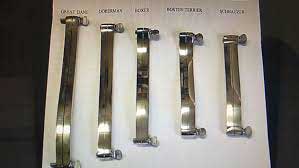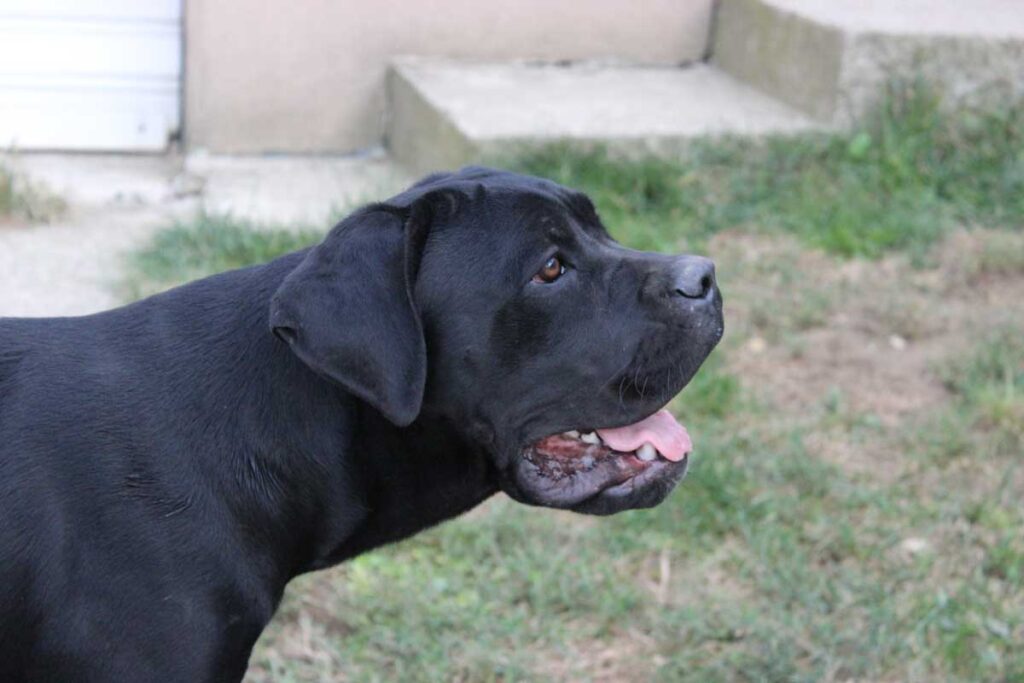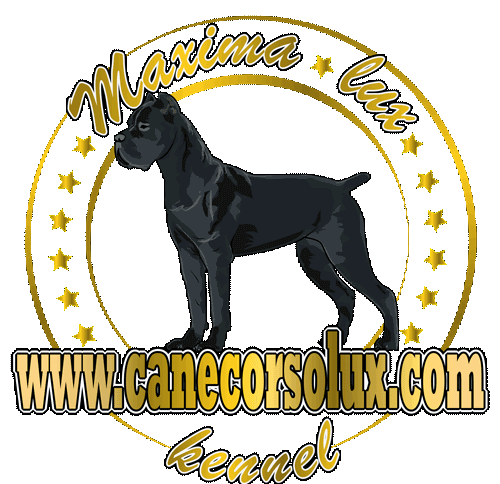Ok, you bought a Cane Corso or thinking about getting one. One of the first things you should think about is whether you want a cropped puppy or a natural-looking one. Then, I will explain the procedure, cutting styles, shapes, recovery, taping procedure, aftercare, and everything else you need to know about Cane Corso cropping and docking in this text. So, let’s get started.
What is the best time for ear cropping and tail docking?
Let me start with tail docking. Breeders, mainly from the USA, are doing it between the third and fifth day of puppy life. Many breeders in other parts of the world are doing tail docking at the same time when they are cropping the puppy ears. That is done because the pup is already sedated and anesthetized for ear cropping, and putting it again in anesthesia and dividing these short operations is very dangerous. The tail should be docked at the 4th vertebrae.
The best time for ear cropping and tail docking procedure is between eight and twelve weeks of age. That is a period when puppies are old and strong enough to handle the process well, and their cartilage is young enough to recover fast and to straight their ears fast.
The older dogs can be cropped and docked, but the procedure is more challenging due to thick ear cartilage and a more complicated and extended period for raising those ears. Also, aftercare is more difficult because of the slower process of healing of an adult dog. The tail is completely formed and thick in that period, and it’s very hard for docking. In my personal opinion, cropping and docking a Cane Corso puppy after twelve, eventually fourteen weeks of age, is late shouldn’t be done, and I doubt any licensed vet would do it.
Are ear cropping and tail docking dangerous? Can a pup die during it?
I must say yes. Ear cropping and tail docking is a brief and straightforward procedure for any good vet, but the risk is always there when using anesthesia. Unfortunately, anesthesia can cause heart failure, allergies, or breath problems which can cause a pup’s death, and there is also a risk of bleeding and wound breakdown over the incision. In all cases, a puppy must have issues with a heart, lungs, or allergies not familiar to the owner. Unfortunately, that’s the way I didn’t hear of the vet that can guarantee 100% safe ear cropping and docking.
There is also danger threatening from infection and bacteria in the aftercare process. Especially make attention to bacteria on the tail wound. You must keep the surface where your pup is spending its time, clean especially seven days after the procedure and few days after losing its stitches. Look at pup wounds daily. If you notice a strange color or smell or see a pup’s peculiar walk or refusing to eat his food, contact your vet immediately.
How are ear cropping and tail docking done?
Ear cropping and tail docking is a simple surgical procedure in which parts of the ear and tail are removed.
One of the most crucial things most people forget before bringing the pup to a vet is NOT to feed it. You must stop feeding your puppy 10 to 12 hours before the procedure. Restrict your dog to the water also, 5 or 6 hours before surgery.
The procedure starts with a pre-anesthetic-sedative-analgetic drug for relax the puppy’s muscles. After few minutes, the anesthetic will be given intravenously or by gas through a breathing tube if it is previously installed. Very fast puppy is unconscious. The vet should be checking his breathing all the way procedure is done.
Then he will attach clamps or modules to the puppy ear. Clamps determine the shape of the scar thus the shape of the ear. Every dog breed has clamps for the authentic look of their ear. That makes their trademark.

The next step is stitching the edges of the ears.
The tail should be docked at the 4th vertebrae with short cut all their way around.
And, of course, stitching the tail with no more than 4 or 5 stitches.
The puppy should be awakened from anesthesia after 15 minutes. After that, you should leave it in the vet office for an hour or more to be assured it reacts well.
And that’s the whole procedure of the ear cropping and tail docking process, all together should last from 45 minutes to one hour long.
What are the different types or styles of ear cropping for Cane Corso?
I explained in the text above that shapes of the ears are determined by the clamps or modules the vet is using during the surgery procedure. And they are all different for a specific breed.
The styles of ear cropping are not so different.
There are four most used styles of ear cropping:
Battle crop,
Short crop,
Show crop
and Tall crop.
The battle crop is the shortest ear crop style, where less than 1/3 of the ear is left. That cropping is not very often in Cane Corso, but I saw it in some working lines.
A long crop or tall crop is also uncommon for the Cane Corso breed. It is the most extended crop style where ¾ of the ear is left. It is very long and pointy.
The most common ear crop style for Italian Mastiff is short crop and show crop. Short crop leaves around 2/3 of the original ear length. Show crop is a style similar in size with a short crop but pointier. This style is mainly used for show dogs, as its name says.
How much does ear cropping cost for a Cane Corso?
If you ask how much you should pay to a vet for this procedure, the answer is 200-800 USD or a little less euro. But if you ask your breeder how much this will cost, most of them would say a higher amount. Don’t get me wrong, in both cases, the same; licensed vet should be doing the procedure. And the procedure is the same for you and the breeder. But the breeder should do the aftercare process after surgery for every pup, the same way you should do it for one puppy if you are bringing it home after surgery. That is a hazardous period for puppy health, and you must be very cautious.
How long does ear cropping take to heal?
Fourteen days is a period ear cropping should be completely healed. Seven days after surgery, you should visit a vet for check-out control and removal of stitching. Then, of course, if everything else is ok with a puppy. If it eats well and the wound looks good and smells normal.
Let’s start from the beginning. The same day, few hours after surgery, you should offer water to a puppy. Then, after six, seven hours, you can let it eat. It’s normal if the pup is still unstable on feet it takes a day or two to get entirely in normal. After that, the puppy must be protected with antibiotics. You will be given information about that from your vet.
He should give you a cone for the pup, and you should supervise it the whole time. After a day or two, the puppy scratches its ears and nibs its tail. It’s because stitches will tighten their wounds. You must be very careful in that period until five or six days after surgery. You should be checking its stitches; they shouldn’t crack. There are many creams for fast wound healing. You can check it up with your vet.
Take good care about surfaces the puppy is moving. It should be immaculate. A dirty cover is dangerous for puppy wounds because it can simply transfer bacteria.
How long does it take for Cane Corso’s cropped ears to stand?
My practice about raising the Cane Corso ears starts two days after the stitches are removed and the wound is completely healed. I begin with ear taping. The ear is taped the way it can breathe. The airway must be present all time. The ear should be taped in the root, at the point they contacting the head. Tape should stay for a day or two and that gently removed. Before removing, wet the tape to prevent hair removal.
If the ears still do not stay fully erected, repeat the procedure.
Does Cane Corso’s ear cropping have any benefits?
If you are a new Cane Corso puppy buyer and a future owner and you have doubts about cropping ears to your Italian Mastiff, I will try to help you from my own experience. I should mention that I own many cropped and a few uncropped Cane Corsos, and I owned many more in the past. This is my opinion only!
You can read about three main reasons for cropping your Corso’s ears:
Health,
Practical reason and
Aesthetic reason.
From my experience and everything I read about health reasons for Cane Corso ear cropping, I can’t find firm evidence that ear cropping reduces the risk of ear infections at the Cane Corso breed. I didn’t have not even one issue with my uncropped dogs considering ear infection. Also, I didn’t find not even one official veterinary study and evidence on this issue. I think some breeds are more prone to ear infections than others. Also, some individuals of the same species are more prone to some issues than others.
I believe there are more practical reasons for ear cropping and tail docking.
First of all, that the floppy ears are natural handles for grabbing. As a “catch and hold” hunting dog, Cane Corso puppies every day “toy” are ears of his littermates. They grow up fast and guess how they play together, in lack of actual toys. Working dogs should have cropped ears for protection reasons. It should reduce the chance of grabbing and holding their head by intruders.
Cane Corso is a very active dog breed with a high prey drive. The most common, everyday game for them is catching (grabbing) everything they can with their teeth—many times, it’s other dog’s extremities and ears. Ears are gentle and can be cut easily with purpose or in the game. Because of many nerves, ends and veins, ears are heavily blooded. If they are thorned, they bleed massively. In a lot of cases, it can be thorned the whole pieces of them. In that case, you must go to the vet for stitching. Ear wounds can scar badly and end up diverting blood flow away from the tip of the ear with a result of partial loss of the ear.
Floppy ears can be ripped badly while the Corso’s are sticking theirs wise, curious heads in all sorts of unusual places.
Practical reasons for tail docking knows every Cane Corso owner who lives in an apartment. You must realize that Italian Mastiffs are tail-wagging machines.
Can you only imagine what that thick, long tail can wipe away? Keep your small kids away!!! I am just kidding.
The tail is also a great handle as the ear. Often injuries appear right on it, even in unserious bite play between puppies.
Aesthetic reason for Cane Corso’s ear cropping and tail docking is, for many people, the least important reason for animal cruelty, as they call it.
Cropped Cane Corso has that alert, more dangerous look. On the other hand, the one with a floppy ear looks more “soft,” cuddly, and way less aggressive on the first look. I say this from my experience.
Impressions of people while I am walking my dogs are entirely different. For cropped dogs, they say they look scary, aggressive, and dangerous. People with kids are moving steps aside when they see them.
The floppy ears squad is more friendly-looking. Even kids approach them for cuddling.
Cropping ears give to a Cane Corso look accent on square head and muzzle. That is just the look wanted in every Italian Mastiff standard description. Floppy ears give that rounded head look.
Floppy ears can cause a problem for the people who are preparing their Cane Corso’s for shows. There are several types of cartilage deformity. The shape of the ear is not held tight to the cheeks and not extending beyond the jaw bone, as it says in standard. There are rose ears (greyhound-looking ears) and hanging ears (like a bloodhound breed). That kind of ear must be taped, and it’s can be very difficult to put them back in the right shape for the show.

Conclusion
Cropping ears and docking tails to dogs has a very long history. In ancient times tail docking was done in the belief that it will prevent rabies. People cropped their dogs to avoid injuries in bear and wolf fights. Some of them were feeding their dogs with their earpieces to make them more aggressive.
Nowadays, besides working line dogs, most of Cane Corso’s cropping and docking is done for a cosmetic aesthetic reason. But is this the truth?
Are the people only cropping Italian Mastiff’s ears to get the more dangerous-looking dog? The real guardian.
Or are the cropped ears and docked tail, done in that specific style and shape, a trademark for Cane Corso’s appearance many years back.






